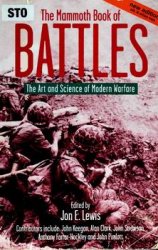Analogy This concept relates to the inferences archaeologists make regarding the reconstruction of past behavior based on information from ethnography, ethnohistory, ethnoarchaeology, or comparative studies.
Annales An influential movement in historical research that seeks to reconstruct the complete history of a wide range of human activities and social life that vary over short to long periods through a multivariate data set, such as documents, oral history, material culture, geographical information, economics, archaeology, and social theory.
Archive Collection of documents in government offices, churches, libraries, museums, town halls, and private holdings studied by ethnohistorians.
Contact studies This specialty involves historical and archaeological research on the interaction between colonial peoples and indigenous societies, and examines how culture contact resulted in transformations in native cultures. direct historical approach Relies on ethnographic and historical evidence to correlate archaeological sites and artifacts with known cultures and combines the data to reconstruct past societies and specific human behavior. emic A term that describes a view from within a society or an insider’s perspective on a culture that is obtained through native voice, symbolism, material creations, or actions. ethnography The description of contemporary human societies and culture that combine social analysis, comparative theory, and occasionally historical and archaeological contexts (also cultural and social anthropology or ethnology). ethnohistory This field of inquiry, methodology, or discipline examines past human behavior and elements of a society, such as demography, social change, and material culture, and how they were maintained or transformed through time by using written records and oral accounts.
Longue dunee This term refers to periods of little or slow change in a society, or predictable cycles or repetitions of cultural elements over an extended period, that are integrated with large-scale environmental or material factors. In archaeology circles, this concept often signifies the long duration of cultural continuities.
Middle-range theory This concept covers the different methods and ways that archaeologists reconstruct past human behavior from interpretations of material remains in the archaeological record.
Upstreaming Refers to the use of ethnographic or ethnohistoric data from modern cultures to critique reconstructions of or directly interpret past behaviors and cultures in the archaeological and/or historical records (the reverse is referred to as ‘downstreaming’).
This article covers the usage and importance of eth-nohistory in archaeology. Ethnohistory is a multidisciplinary field of study. The discipline typically focuses on past indigenous societies and how they changed following contact with expanding Western states in the Colonial and Post-Colonial Periods (usually around 1500-1900). Ethnohistory frequently involves the study of documents and/or oral histories related to indigenous lifeways, language, religious beliefs, economic organization, material culture, and how they were transformed following encounters with Europeans. Ethnohistory has been described in the past as the study of identities, locations, contacts, movements, numbers, and cultural activities of indigenous peoples from written records. Essentially, this field can be portrayed as the ethnography of past cultures through historic sources, either written by colonists (usually European) or indigenous peoples following colonization, and it involves the interpretation of social behaviors and cultural transformations.
Many archaeologists do ethnohistorical research, yet in most cases they rely on published information on primary sources or studies carried out on them by ethnohistorians or historians. In turn, ethnohistorians undertake or participate in archaeological projects as archival researchers and usually not as excavators. However, that is changing today since some archaeologists also retrieve data from archives, explorers’ accounts, and oral histories, and ethnohistorians are more interested in first-hand archaeological findings. While archaeology and history can be used separately for studies of the past or culture change, this essay concentrates on the use of ethnohistory and archaeology together in research projects to learn more about ancient societies. Therefore, as it can be imagined, the direct utilization of both fields of inquiry and data sets is a worthwhile but difficult task. It is easy for an anthropologist to incorporate historical information in a discussion of culture change, yet it requires more effort to gather original archaeological and historical data as well.
Although ethnohistory was influential with historians and social anthropologists during its genesis, the relationship between and interconnectedness of ethnohistory and archaeology continues to expand. This relationship fits well within the Annales school of historical scholarship, for instance, where different but interrelated data sets and perspectives help achieve a more complete analysis of the past. The Annales approach is also concerned with the differing pace of historical events over the short and long terms. In other words, specific political events can occur in short periods in a society whereas ethnic interaction and change can take place over centuries. Interestingly, the importance of ethnohistory in archaeology is not usually explained in archaeology textbooks, yet many archaeologists incorporate eth-nohistoric research findings or original historic data in their studies. However, textbook authors who work in Middle America usually discuss the utility of ethno-history and this is perhaps due to the extensive archives and historical research in this culture area.
Ethnoarchaeology and historical archaeology, which are related disciplines, generally receive more treatises than ethnohistory in textbooks and discussions of archaeological inquiry. They differ from ethnohistory, however, in that ethnoarchaeology is concerned with ethnographic studies of human societies and their material culture and how they help archaeologists create behavioral analogies with the past. Sometimes there is an ethnohistorical component in ethnoarchaeology, but it mainly deals with the ethnographic present. At the same time historical archaeology is traditionally viewed as the study of Europeans and their settlements and society from the Colonial Period to the twentieth century with a particular emphasis on the nineteenth century (as seen in the article content in the flagship journals in this discipline; besides the serial Ethnohistory, the Annual Review of Anthropology, American Antiquity, and the Journal of Field Archaeology are good places to begin researching case studies and theoretical approaches to ethnohistory in archaeology). However, there is actually much overlap between historical archaeology, ethnoarchaeology, and ethno-history, and their uses in archaeology with regard to methodologies, aims and goals, creation of analogies, contributions, and their connections to history.




 World History
World History









